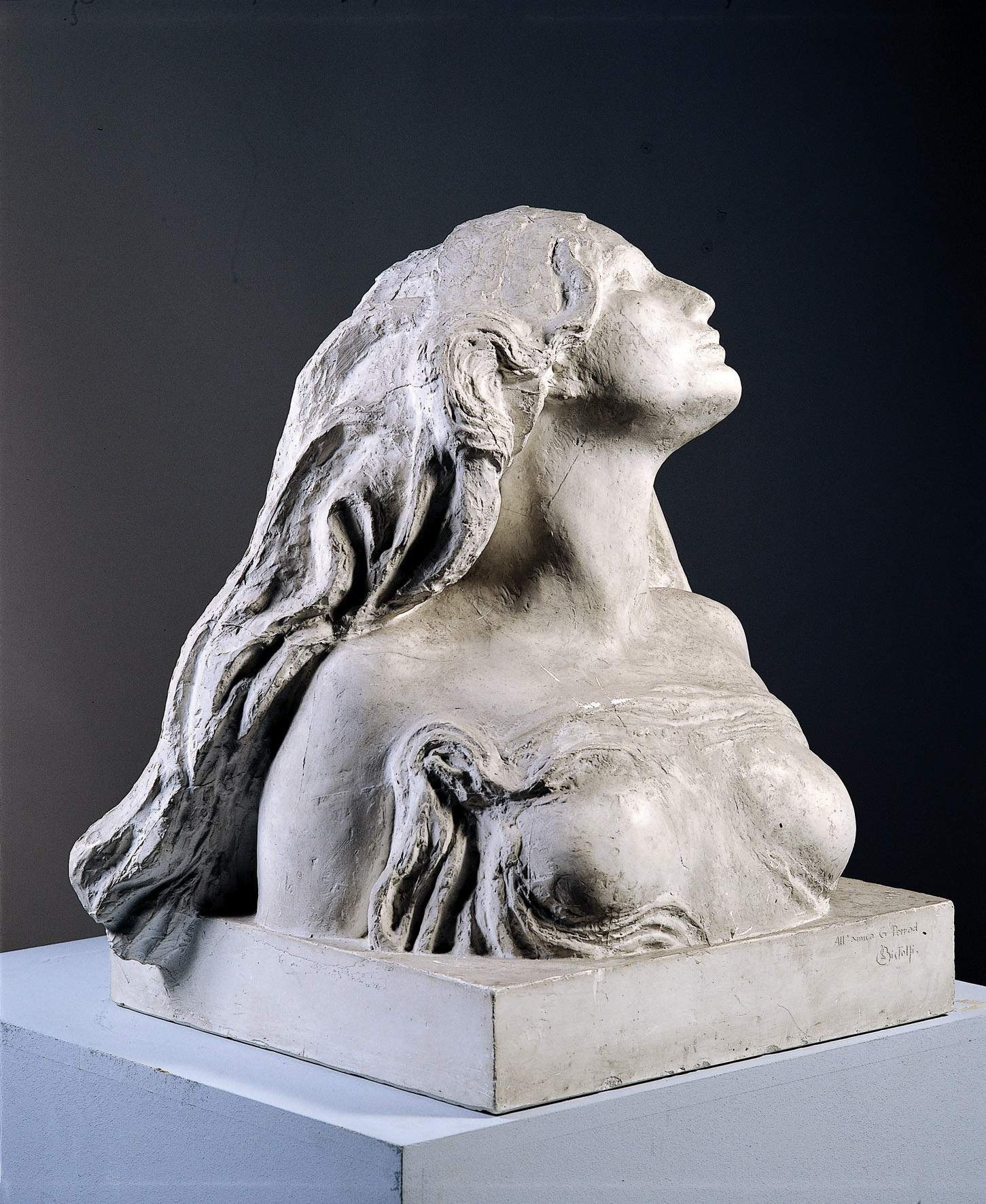
Click here to view image
The Death
Mitchell Wolfson Jr. 2007 Genova - donazione
Leonardo Bistolfi (Casale Monferrato, 1859 - La Loggia, 1933)
sculpture
87.1111.6.1
Unità di misura: cm; Altezza: 72,5; Larghezza: 63; Profondità: 50
gesso
In the preparatory sketches 'Life and Death. Towards Light' made by Bistolfi for the Abegg tomb in Zurich, similarities can be discerned with the image of “L'Alpe” from his funeral monument for Giovanni Segantini in Saint-Moritz (1899-1906). The work, with the dedication engraved on the base “To my friend Perrod”, a collector of Piedmontese art, represents the plastic detail of the full-length plaster model, kept in the Museo Civico in Casale Monferrato and exhibited at the Venice Biennale in 1914. A marble version of this bust also exists at the Museum of Italian Art in Lima.
In the seductive female figure emerges the artist's adherence to the stylistic features of Art Nouveau, a term with which, taking its name from the London atelier of Arthur Lasenby Liberty, the art nouveau style was defined in Italy. In this preparatory plaster sketch for the Abegg tomb in Zurich, one finds the expression of an innovative plastic relationship with space. The half-length female figure turns her head upwards with a delicate twist of the neck.




